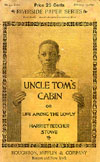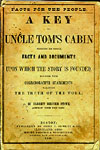
Figure 3
Click to enlarge
|
Langston Hughes, the acclaimed and prolific Harlem Renaissance-era poet who edited a 1952 illustrated edition of Uncle Tom's Cabin, regarded it as "a good story, exciting in incident, sharp in characterization, and threaded with humor." Indeed, a discussion of African American responses to the novel invites, if not requires that a set of reconstructions be staged. It is instructive to revisit, however briefly, the worlds into which that book appeared. It is also is beneficial to review the literary landscape that shaped the African American readers and writers who contributed to the still-legendary sales in 1852 of 5,000 copies in two days or the equivalent of one book per minute for forty-eight hours. This essay focuses on some aspects of that nineteenth-century milieu, as well as key race concerns and literary traditions that both shaped and were shaped by Uncle Tom's Cabin.
The serialized Uncle Tom's Cabin appeared as the nation of Liberia took shape and the book version of 1852 appeared just six years after the end of Mexican War, a conflict that many African Americans and abolitionists opposed and regarded as a pretext for the expansion of slavery. The work's publication coincided with heated debates about colonization and emigration and as anti- and pro slavery camps continued to argue about slavery, abolition, and the politics of gradual and immediate emancipation. The scenes in which Stowe dispatches a tamed and claimed Topsy to Liberia and provides rhetorical space for George Harris to think aloud about the need for his race to have "a tangible, separate existence of its own" on "the shores of Africa" where he envisions "a republic, — a republic formed of picked men, who, by energy and self-educating force, have, in many cases, individually, raised themselves above a condition of slavery," directly impacted the nature, intensity, and spirit of debates between eloquent political activists and leaders such as Martin Delany, James Monroe Whitfield, and Frederick Douglass about African American futures within and beyond American borders.*
Images of African American domestic practices—implemented in the shadow of and within the Southern plantation great house, were inextricably linked to cultural myths and stereotypes about African American women and families, and the plethora of images of Uncle Tom competed against the performed blackness that was part of minstrel shows in which white men donned blackface for audiences who imagined that this was authentic racial performance. The novel also contributed to ongoing discussions of true womanhood, true black womanhood, and the politics of childrearing and education. The novel was memorable for so many because of its powerful accounts of distraught mothers and vulnerable children: Eliza who tripped a desperate light fantastic on ice floes across the Ohio River to safety, Prue, the tormented woman driven to drink in the years following her essential imprisonment by a man who "kept [her] to breed chil'en for market, and sold 'em as fast as they got big enough,"* and Topsy the unclaimed wild child whose appetites signal deep psychic needs that no purloined ribbons ever will satisfy.
African American responses to the work were informed by the substantial body of testimonial literature—memoirs of bondage, self-emancipation, recapture, and freedom—that included the elegant but terse 1774 poetical musings by Phillis Wheatley, the 1789 Interesting Narrative of the Life of Olaudah Equiano, the eloquent pathos-filled verses of George Moses Horton, the gripping 1831 memoirs of the resilient and tested West Indian Mary Prince and the ambitious spirit-filled Nat Turner, architect of the revolt in Southampton, Virginia that rocked the South and the North, as well as the celebrated 1840s-era narratives by William Wells Brown, Henry Bibb, Henry Box Brown, as well as Frederick Douglass whose first memoir sold 5,000 copies in four months and was more widely read than Henry David Thoreau's Walden, and Josiah Henson's 1849 life story that went into at least three editions and sold some 100,000 copies during his lifetime. The literary dimensions of freedom, enslavement, survival, and testimonies about those who managed to create sanctified lives in unholy times were enriched by narrative such as Bostonian Susan Paul's 1835 Memoir of James Jackson, The Attentive and Obedient Scholar, the 1835 fiery essay collection entitled The Productions of Mrs. Maria W. Stewart, the 1850 narrative by Sojourner Truth that chronicled her loss of home and family and acquisition of faith, and legendary speeches such as the one that she delivered in 1851 at the Akron, Ohio Women's Rights convention that confirmed her role as a formidable and insightful political voice of the age. Nineteenth-century readers of Stowe read that book through the lens of their own experiences of freedom and of bondage, as dedicated and enterprising abolitionists, as laborers and professionals, as survivors of marriages and families forever undone by slavery, as subscribers to and supporters of African American and abolitionist newspapers such as the Rochester, New York-based North Star and the legendary Boston Liberator. The range of responses confirms that discussions, impressions of, and debates about the issues, portraits, and histories depicted in Uncle Tom's Cabin contributed to and benefited from what scholar Benedict Anderson has described as an "imagined community," one created in large part by shared experiences that transcend place and depend on media that disseminate information and enable shared experiences of and collective reactions to events and issues.
The first African American communities to contend with Uncle Tom's Cabin did so in the context of abolition, controversial expansion of slavery into the territories, the systematic invalidation of any notion that there was a "free north," and strengthened pro-slavery legislation like the 1850 Fugitive Slave Act. Stowe's novel emerged at a time when the evils of the "peculiar institution" were increasingly visible and by 1851, when the novel first began to be serialized in the abolitionist newspaper The National Era, the nation in which free-born, self-emancipated, and enslaved people of color were living was well on its way to claiming the 4 million souls who would be counted in the 1860 federal census. It is illuminating and thoroughly informative to consider the emergence and accumulated cultural, social, and political power of Uncle Tom's Cabin in the context of abolition. The movement to end slavery and inaugurate equal rights for all people had such a rich and pioneering history in Stowe's New England where African Americans like those of color in Boston who founded the Massachusetts General Colored Association, the nation's first antislavery society, and the enterprising ladies of African descent in Salem whose Salem Female Antislavery Society was the first women's antislavery society in America.
|
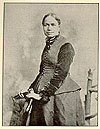
Figure 4:
Frances E. W. Harper
|
As early as April 1852, and even before the book was in the hands of the reviewer, the Frederick Douglass Paper assured its readers that the book was "a thrilling Story, from the accomplished pen of Mrs. Stowe" and that "[t]he friends of freedom owe the Authoress a large debt of gratitude for this essential service rendered by her to the cause they love."* The review, which may have been penned by Douglass but also by his colleague Julia Griffiths, proposed that "the touching portraiture [Stowe] has given of 'poor Uncle Tom,' will, of itself, enlist the kindly sympathies, of numbers, in behalf of the oppressed African race, and will raise up a host of enemies against the fearful system of slavery."* Frances Harper, one of the most eloquent respondents to Stowe's work, published a four-stanza poetic tribute to the writer in the Frederick Douglass Newspaper in which she thanked her for "thy pleading / For the helpless of our race," "thy pleading / For the fettered and the dumb," and "the kindly words / That gree'd they pen of fire / And thrilled upon the living chords / Of many a heart's deep lyre."* Harper was deeply affected by the novel—as her literary tributes to characters like Eliza and slave mothers powerfully demonstrate.
Stowe's writerly labors prompted many moments of recognition and honor, including ones that testified to the international contexts and locations in which African Americans and people of African descent were aware and appreciative of her work. Writing from London, England in the summer of 1853, William Wells Brown reported to William Lloyd Garrison and the vast network of Liberator readers that "Uncle Tom's Cabin has come down upon the dark abodes of slavery like a morning sunlight, unfolding to view its enormities in a manner which has fastened all eyes upon the "peculiar situation," and awakening sympathy in hearts that never before felt for the slave."* Brown, as well as the escaped fugitives Ellen and William Craft, sat in company with British aristocrats like the Early of Shaftesbury and Her Grace, the Duchess of Sutherland amid the five thousand who assembled there to greet Stowe. According to Brown, when the "greater lady (the author of Uncle Tom) made her appearance," and sat next to the Duchess, "there was a degree of excitement in the room that can better be imagined than described. The waving of hats and handkerchiefs, the clapping of hands, the stamping of feet, and the screaming and fainting of ladies, went on as if it had been in the programme, while the thieves were at work helping themselves out of the abundance of the pockets of those who were most crowded."* A few months later, in late October 1853, the National Era could report that a Dr. McGill "of Maryland of Liberia" presented Stowe with a "a massive ring of African gold, and of African manufacture."*
Communities of color in Canada produced notable responses to Uncle Tom's Cabin. Many of the people of color had ties to enclaves of self-emancipated people and individuals who migrated north to elude the ever-encroaching reach of pro-slavery legislation and its emboldened proponents. Other people of color came to the novel through their knowledge of the ambitious antebellum colonization initiatives that culminated in settlements at Wilberforce that involved individuals such as the free-born New England Baptist minister brothers Nathaniel and Benjamin Paul, and the Dawn settlement in Southern Ontario that the legendary Josiah Henson established. People of African descent and African American migrants facilitated critiques of the novel, even as they also fueled ongoing debates about the breadth of pro-slavery sentiment in America. Henry Bibb, editor of Canada's first African-American newspaper, the Windsor, Ontario-based Voice of the Fugitive, was a leading voice in this regard. A mixed race child born of a white Kentucky state senator and an enslaved woman named Mildred Jackson, Bibb's repeated efforts to escape slavery were shaped in part by his outrage and helplessness in the face of his enslaved wife's forced sexual cooptation. He eventually became a powerful antislavery lecturer, was colleagues with Douglass and William Wells Brown, and collaborated with Josiah Henson to found the Refugees Home Colony in Canada. Bibb made a point of reprinting in his pioneering newspaper notable commentaries on the novel, as well as wrenching accounts of captures and confrontations that both underscored the timeliness and rightness of Uncle Tom's Cabin as well as the absolutely unwriteable horrors of slavery. In May 1852, he reprinted "unique remarks" from the Boston Christian Observer that characterized Uncle Tom's Cabin as a work that would benefit considerably from the "fame of the author, and her lively manner of treating the subject of slavery," both of which elements would "cause the work to have a great run, — which is, after all, the great desideratum of a true Yankee, — and thousands and thousands of dollars will be the reward of both author and publishers." The review, which Bibb systematically critiqued, also insisted that the novel "partakes somewhat of caricature of Southern habits and Southern Christians" and that reflected an unflattering "habit of some people at the North to call into question the sincerity of those professors of religion, who happen to live in a slave-holding state." "People who 'live in glass houses ought not to throw stones'," intoned the Christian Observer writer, before pondering aloud whether "it not be well for us to turn our thoughts inward and see how we ourselves stand in the sight of God, before we accuse our Southern neighbors of hypocrisy?"* In an invaluable moment of critique that highlights the intensity and deftness of African American responses to Uncle Tom's Cabin and its critics, Bibb offered a bracketed, but undeniably potent response:
We presume, as the above remarks are from a paper entitled "Christian Observer," that the writer either imagines himself to be a Christian, or wishes to pass himself off as such: the latter is, in all probability, the true state of the case. We would like to know what description of slavery that is which so far perverts the intellect as to cause a man to imagine that an endeavor to reform abuses — a wish to make men do to each other as they would have others do to them — is "quarreling with our Maker." What does the writer mean? Are we to understand that all the systems of villainy now established in the world are under the direct patronage of the Divinity, and that they are not to be interfered with until the Divine Power sees fit to remove them? If this is indeed a fact, how egregiously men have erred in all times past! Rejoice, ye housebreakers and midnight assassins — let the whole fraternity of criminals rejoice — for your time honored vocations are under the protection of God! Society has no right to interfere with your peculiar employments; and the appointment of magistrates, police and penitentiaries for the purpose of arresting you in your infernal occupations, are only so many implements of war directed against the Divine Power, which permits and protects your existence.*
In July 1852, Bibb once again fanned the flames of readerly debate, republishing a thoughtful and unselfconscious set of musings on the novel and the world that produced it. "After reading Uncle Tom's Cabin, we find our sympathies fairly roused on the subject of slavery. 'What can I do?' is the question which comes home to every heart," declared the writer identified only by the initials S. J. "We cannot go and unloose their bonds; we cannot change the cruel laws which keep them in slavery, nor the still more cruel one which returns them to it. The heart sickens at the thought that there are multitudes in our free country, suffering in the same way that 'Uncle Tom' did, and multitudes more enduring all 'Cassy's' wrongs and wretchedness."* The author of this piece then described the "simple and feasible plan [that] must have come from Heaven"—the establishment of "permanent homes" for the "exiles" from slavery. In this moment, Bibb, through his editorial decision to reprint the lengthy article about the plight of enslaved people in America and the viable Canadian alternatives to the pernicious system, not only underscored the relevant and trustworthy realism embedded in Stowe's novel but advanced a bold Afrocentric plan that endeavored to respond to the thousands "driven from the free States, through the panic occasioned by the Fugitive Slave Law," and the estimated thirty-thousand people of African descent living in Canada and regarded by writers of articles such as these as "refugees."* This scenario echoes the question that Martin Delany, an unselfconscious critic of Stowe, the novel, and the race politics in which it was bundled up, asked in the Condition, Elevation, Emigration, and Destiny of the Colored People of the United States and Official Report of the Niger Valley Exploring Party (1852) : "What can we do? What shall we do? . . . Shall we fly, or shall we resist?"*
Four months later, Bibb borrowed from the Sandusky Paper an article titled "An Incident for Another Uncle Tom's Cabin" that buttressed the claims of inhumanity that were at the heart of abolition work. The account of what happened when "a young woman with an infant child, eight or nine months old" was captured justified and complicated the narratives of family distress and antebellum acts of rendition in Stowe's novel. This nameless woman, "supposing herself doomed again to slavery," chose to disown her child—and "jerked loose from [the slave-catcher], ran some steps, threw the child upon the ground and returned towards the slave catcher." The editorial comment here, brief in the face of such exquisitely painful composure and sacrifice, could conclude only that the woman "disowned" her child and "denied in the most positive terms that it was her child," because "to disown and desert it, she hoped, was to allow the dearest treasure of her heart to grow up, breathing the air of freedom," and it was "[f]or this she stood nobly ready to dismember the ties of such affection as a mother only knows and leaves to chance, or other hands, the rearing of the infant, dearer than life itself."*
Such emphatic and textually complementary narratives as these that Henry Bibb disseminated in Canada abound in the nineteenth-century press. Like these Voice of the Fugitive articles, the complementary historical often are offered up as authenticating devices and meta-narratives for the book that aspired to shed light on "Life among the Lowly" in antebellum America. In this act of testimony, African American respondents to Uncle Tom's Cabin thus developed roles for themselves as de facto public race historians; they seized opportunities to redeploy Uncle Tom's Cabin into the anti- and pro-slavery fray where, many of them like Frederick Douglass hoped, it would fulfill itself "as a godsend destined to mobilize white sentiment against slavery just when resistance to the southern forces was urgently needed."* In other instances, already politically astute respondents became impassioned documentary journalists and advocates who insisted that the novel was an unreliable social and political document, a pale account—all puns intended—of the true horrors, depth of heroism, and range of intraracial alliances that enabled survival, resistance, and moments of triumph.
In 1853, on the heels of the publication of Uncle Tom's Cabin, the New Hampshire-born poet and Masonic leader James Monroe Whitfield resurrected the awful bloodied land in which Stowe's tragic hero died.* Whitfield's poem, titled simply "America," featured an impassioned narrative who declared, "America, it is to thee / Thou boasted land of liberty, — / It is to thee I raise my song, / Thou land of blood, and crime, and wrong. / It is to thee, my native land, /From whence has issued many a band / To tear the black man from his soil, / And force him here to delve and toil; / Chained on your blood-bemoistened sod, / Cringing beneath a tyrant's rod, / Stripped of those rights which Nature's God / Bequeathed to all the human race."* Whitfield's epic poem featured images of unleashed heavenly might and humble prayers of humanity ended on a note that recalled the sobering power in the final moments of Tom's life. Whitfield—a dedicated emigrationist with maternal family ties to the Freewill Baptist tradition that regarded antislavery work as a mandate of one's faith—admitted earnestly, "The battle is not to the strong; But in the sacred name of peace, / Of justice, virtue, love and truth, / We pray, and never mean to cease, / Till weak old age and fiery youth / In freedom's cause their voices raise, / And burst the bonds of every slave; / Till, north and south, and east and west, / The wrongs we bear shall be redressed."* Although Whitfield never mentioned Uncle Tom's Cabin directly in this or any other of his published poems and letters, his poem offers one of the most compelling examples of African American accommodation of Uncle Tom's Cabin and the life of its eponymous tragic hero. Whitfield's image of "weak old age and fiery youth" blends two often incompatible forces—ones that explain many of the protesting African American responses to Stowe's work.
The America that Whitfield imagines is one undone by collective work to "burst the bonds of every slave" and such projects prompted many then and now to consider if that work was the rightful and sole duty of those within the race. The free-born future black nationalist explorer, physician, writer, and highest ranking African American Civil War soldier Martin Delany chided Frederick Douglass when the acclaimed orator and editor consulted Stowe on "some method which should contribute successfully and permanently, in the improvement and elevation of the free people of color in the United States." Unable to contain his frustration, Delany exclaimed in his pointed letter to Douglass, "Why in God's name," he exclaimed, "don't the leaders among our people make suggestions, and consult the most competent among their own brethren concerning our elevation. . . We shall never effect anything until this is done." Delany also offered what Douglass promptly characterized as a "jarring note," and insisted that he "I would not give the counsel of one dozen intelligent colored freeman of the right stamp, for that of all the white and unsuitable colored persons in the land."*
Embedded in Delany's complaint is anxiety about African American agency in an age when legislation like the Fugitive Slave Act not only further justified continued disenfranchisement and subjugation of all people of color, but also encouraged Northern complicity in such matters. Delany, we should recall, was a gifted but thwarted polymath, an inventor denied a patent for a mechanical device that would enable trains to move freight up and across mountainous terrain, and whose promising medical studies at Harvard were cut short when white students protested his presence and that of two other upstanding Bostonians of note solely on the basis of their race. Delany endured the kind of threats to self that James C. Pennington located squarely in slavery. Writing to Stowe in November 1852, Pennington, a man who regarded himself "held" in slavery and who eventually settled in Hartford as a minister and educator, assured the novelist that slavery was "an awful system," one that "takes man as God made him . . . demolishes him and then mis-creates him, or, perhaps should I say, mal-creates him."*
African American responses to Stowe—and Stowe's responses to African Americans as illustrated in and beyond Uncle Tom's Cabin—demonstrate the high critical concern on both sides of the color line about self-assertion, self-determination, self-realization, and self-sacrifice as portrayed in the novel and disseminated in an antebellum age when the very humanity and self-hood of people of color was perpetually questioned, undermined, and constrained. Yet, it is the tension emerging from the regard for Uncle Tom's Cabin as a book that defined black experience and identity that produces and continues to create readerly caution, cultural suspicion, and scholarly correction. White immigrants gained access to Uncle Tom's Cabin through the host of non-English language editions and they consumed the work with great relish. While some may have read the novel in order to gain insights into African American identity or about American culture, history, and race relations, Uncle Tom's Cabin may have functioned more deliberately as a handbook on how to be white in America. Clearly, though, the racial postures at issue here are inextricably intertwined.
It was issues of American identity politics, privileges acquired and denied, and rights imagined and conferred, that prompted nineteenth-century African Americans to document the full, all-too-often overlooked and underestimated agendas, accomplishments, and experiences of free communities of color. One individual who contributed significantly to this literary and political record was Susan Paul—an exemplary Bostonian, abolitionist, teacher, and temperance worker whom Stowe may well have learned about during her time in that city and in company with Paul's close-knit Beacon Hill community. Paul crafted a compelling documentary narrative about a young freeborn child of color for whom slavery represented the greatest threat to his faith, potential, and selfhood. Her ground breaking biography and account of life in antebellum America was published in 1835, some fifteen years before the first installations of the serialized Uncle Tom's Cabin appeared.
|
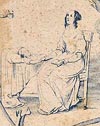 Figure 5
Figure 5
Click to enlarge
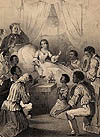
Figure 6
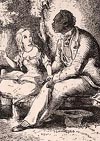
Figure 7
|
The American Sunday School Union, the organization that Paul first sought out as a potential publisher, had adopted a "don't ask, don't tell" policy on slavery in order to preserve its significant Southern networks and religious markets. Agents for the organization swiftly rejected Paul's manuscript because she mentioned the "peculiar institution" briefly, albeit bloodlessly. Paul successfully sought out an abolitionist publisher in Boston and saw her work published. The memoir chronicled the life of James Jackson, a gifted child of color who came to know slavery as an insidious and rapacious force that threatened his intellectual, spiritual, and emotional freedoms. Paul's narrative anticipates some vital issues and scenes portrayed in Uncle Tom's Cabin, most significantly in the chapters relating to discussions of slavery and the death of James, the young protagonist. In a gripping scene that evokes the New Testament account of Jesus's resurrection three days after the crucifixion, Paul preserved for us one of the most compelling deathbed scenes to feature a child of color and one that serves as a telling lens through which to reconsider the highly choreographed passing of Little Eva and the carefully articulated spiritual evolution of Tom. Six-year-old James, like the fictionalized Eva, is fully aware of the implications of death. In Boston, this child who cherishes his schooling, Bible, and family learns that slavery can invalidate the intellectual, spiritual, and emotional trinity that he holds dear. Over the course of three days, James succumbs to death, a state that he seems to deliberately seek out as a reliable palliative for the godless world that would sanction kidnappings and bondage. The power of the memoir lies in its humble yet piercing accounts of domesticity, schooling, and African American agency in the age of slavery and qualified freedom—and the primacy of faith that enables a boy as young as six years and eleven months to declare his desire to "go away and be with" his Saviour: "O I want to go away from this wicked world, and live always with the blessed Saviour in heaven. There is nothing wicked there," he testifies on his deathbed with eyes "apparently fixed on something above him" and hand "raised . . . toward heaven."* Paul's portrait of an innocent's response to slavery anticipates the scrutiny of the "peculiar institution" and the empowering spiritual dialogues between Tom and Eva, interactions staged in a lush Southern paradise that barely masks the hell of slavery.
Paul's Memoir highlights the story that remained untold in Stowe's narrative—the one of an early and will-full response to slavery that was rooted in free will and a free community of color. African American responses to the novel, then, also were prompted by what Richard Yarborough has described as Stowe's inadvertent political inconstancy. "Although Stowe unquestionably sympathized with the slaves," asserts Yarborough, "her commitment to challenging the claim of black inferiority was frequently undermined by her own endorsement of racial stereotypes."* The stereotype—as advanced by Uncle Tom's Cabin—was repeatedly bound up itself in images of enslaved peoples of African descent. Free communities of color—ones that spawned abolitionist protest, built schools, had been petitioning for freedom, equal rights, and against taxation without representation since the late 1700s—do not hold sway in this novel. So, even as the book's greatest power lies in its ability to raise public awareness about slavery and fuel antislavery sentiment, it is a book that cannot easily accommodate the full and real history of African American experiences. German readers may have lauded Uncle Tom's Cabin as "a book that has effected us so deeply, [and] so continuously enchained our interest" despite its "bad Yankee-English, and . . . many inequalities of the style" and suggested as they did in 1852 to that the "Abolitionist party in the United States should vote the author a civic crown; for a more powerful ally than Mrs. Harriet Beecher Stowe and her romance they could not have." But there were substantial factions and divergent opinions and interests in that "Abolitionist party," as it were. Indeed, Stowe may, as one admirer described her, have "walked with lighted candle, through the darkest and most obscure corners of the slave's soul, and . . . unfolded the secrets of the slave's lacerated heart," but she had barely discerned the existence of a counter narrative of intraracial redemption. The black heart that so often is at issue in this novel and in the critical debates about it was throbbing loud but apparently not clearly enough in 1850s America.
In the postbellum age and the twentieth and twenty first centuries, African American responses to Uncle Tom's Cabin grow out of domestic and international efforts to assert and reclaim the humanity of people of African descent. They also are linked inextricably to the complex effort to articulate and implement justifiable responses to oppression. Perhaps, Frederick Douglass started it—in a move that one could hardly miss when he generated his only work of fiction. "The Heroic Slave," published in 1853, may be the countertext to Uncle Tom's Cabin. Douglass's work, which appeared in the anti-slavery collection, Autographs for Freedom, and in Frederick Douglass's Paper, featured reverse and deliberate migrations into slavery rather than out of it, a passionate African American romance heroically defended, and considerations of authentic African American masculinity and heroism. Douglass's heroic figure, named Madison Washington, "was just the man you would choose when hardships were to be endured, or danger to be encountered,—intelligent and brave," with "the head to conceive, and the hand to execute."* It is this figure whom the poet Melvin Tolson conjures up in "Dark Symphony," his acclaimed work that won first prize in the American Negro Exposition poetry contest in 1939. The poem's first lines deliver a rousing declaration about empowerment and the anticipatory, rather than derivative, elements of African American history: "Black Crispus Attucks taught / Us how to die / Before white Patrick Henry's bugle breath / Uttered the vertical / Transmitting cry: 'Yea, give me liberty, or give me death." Where might we locate the gracious, self-denying, pious Uncle Tom in this American history, one might ask. Could Stowe's Uncle Tom also inhabit this same volatile realm in which Attucks, a 6 foot two inch runaway or self-emancipated man of African and Nantucket Indian parents, became the first to die in the Boston Massacre and the first casualty in the American Revolution? Tolson's paean to Attucks celebrates "Men black and strong" who have "stood" for "Justice and Democracy." Yet, while one might ask if there is any, however faint connection of racial brotherhood, between this real man and Stowe's imagined one, Tolson hints that there well might be since his heroes are men "Steeled in the faith that Right / Will conquer Wrong / And Time will usher in one brotherhood." Certainly such lines apply to Tom, who despite his final suffering at the hands of Legree draws his last breath as the expression "of a conqueror" comes upon his face.*
|
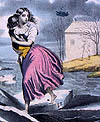 Figure 8
Figure 8
Click to enlarge

Figure 9
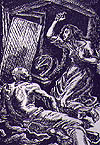
Figure 10
|
Stowe's representation of women's experiences also prompted significant responses by African American writers, notably by Frances Harper who published deeply moving poems about traumatized enslaved mothers and most recently perhaps by Toni Morrison whose Beloved characters Baby Suggs, Sethe, and Beloved, stand in sharp contrast to women like Dinah, Eliza, Prue, Cassy, and Topsy who bear wicked burdens of flawed antebellum domesticity, unchecked white male desire, and an inhumane and dehumanizing marketplace. William Wells Brown's 1853 Clotel explores female subjection and hard-won agency, presidential slave genealogies, and referenced the unspeakable African American messianic fervor that fueled Nat Turner to launch his bloody revolt. Ultimately, in his chronicle of four women and their trials as mothers, daughters, consorts and wives, Brown concludes—like Martin Delany and Pauline Hopkins, to name a few—that the pursuit of happiness is neither feasible nor finite in America. Harriet Wilson's 1859 Our Nig, which dwells on New England and white houses where "slavery's shadows fall," extends the proslavery expose of Uncle Tom's Cabin. The book that bears the full title Our Nig; or Sketches from the Life of a Free Black, In a Two Story White House, North, Showing that Slavery's Shadows Fall Even There and attributed to an author identified as "Our Nig," begins with five uneasily rendered autobiographical chapters followed by more conventional third person narrations, is a provocative countertext of the Topsy and Ophelia narratives that have led to especially rich discussions of topics such as disciplinary intimacy, white beneficence, and African American salvation with which we continue to grapple today.
Uncle Tom's Cabin does not sidestep completely the realities of sexual tyranny and trauma associated with enslavement and because of this effort on Stowe's part, the novel could resonate even more loudly with a broad African American readership who knew full well the specific and pervasive horror of slavery. Harriet Jacobs's Incidents in the Life of a Slave Girl, published seven years after Uncle Tom's Cabin, laid bare the evils of sexual predation that Stowe incorporated into the later chapters of her work. Jacobs also used her account of antebellum life to demonstrate the moral ingenuity and fortitude of the young women and families subjected to it. As works of autobiographical fiction, both Our Nig and Incidents, in their genre characteristics alone, offer disturbing insights into the nature of dissociation and the strategies for creating a written record of unwriteable wrongs, of violence that quite literally is aimed to silence a voice if not serve as a brutal wedge that in Harriet Wilson's case held open the mouth and prevented decipherable sounds. Jacobs herself contended with an equally threatening array of silences. Hers included nervous confidences about her sexual past and moments of unqualified distress, produced in one instance when Stowe commandeered Jacobs's story and exposed it to the woman's employers and supporters without Jacobs's permission and in lieu of any support for Jacobs's desire to receive instead from Stowe, counsel on how best to publish and own her life story.
|
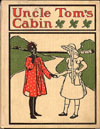 Figure 11
Figure 11
Click to enlarge
|
African American literary invocations of Uncle Tom's Cabin persisted as the nineteenth-century ended and the twentieth began. The accomplished Boston journalist and writer Pauline Hopkins was one of those who revisited the novel and reintroduced her contemporaries to Stowe's memorable characters. Hopkins, who was known best for her role as a pioneering editor of the Colored American Magazine, the nations' first African American literary journal, sought to retell and perhaps redress the wrongs done by and to Topsy. In 1916, as she launched her own promising periodical The New Era, Hopkins began an absorbing serialized story about Topsy Templeton, an unrestrained young orphan of color whose days of mad frolicking in New England schoolyards were numbered once she became the object of rehabilitation advanced by two white spinster sisters.
Many who would debate the relevance, problematics, and potential of Stowe's racial visions, though, come to such conversations through the landmark essay "Everybody's Protest Novel" by James Baldwin. Written in 1949, almost one hundred years after the first installments of Stowe's work appeared, the essay still persists today as one of the most eloquent and decisive critiques of Stowe's work and the necessary agendas of conscientious readers and citizens. Baldwin regards Uncle Tom's Cabin as a "very bad novel," one in which "medieval morality" revolves around polarized constructions of "black, white, the devil, [and] the next world,"* and in which sentimentality is not the locus of transformative cultural power but rather "the mark of dishonesty, the inability to feel . . . and the signal of secret and violent inhumanity."* In his consideration of the protest novel tradition, of which Stowe's novel is a central part, Baldwin notes that the "avowed aim of the American protest novel is to bring greater freedom to the oppressed." Yet, this emancipation never can occur for the novels themselves are constrained by their politics that render them, in Baldwin's view, "mirror[s] of our confusion, dishonesty, panic"; they are works "trapped and immobilized in the sunlit prison of the American dream."* It is this awful suspension and dastardly liminality that ultimately denies life—and a discernible, usable freedom—to figures like Tom and his literary descendants like Richard Wright's Bigger Thomas and the terrorized young men who haunt the pages of Wright's short story collection Uncle Tom's Children. Baldwin cannot accept the social and racial deaths that seem to be prerequisites for palatable protests. He laments the inevitable and unproductive "web of lust and fury" in which "black and white can only thrust and counter-thrust, long for each other's slow, exquisite death"; this awful and perpetually unresolved limbo exists, writes Baldwin, because, as is so pointedly illustrated in Native Son, African American characters "accep[t] a theology that denies him life . . . admit the possibility of being sub-human and fee[l] constrained." The secret for liberation—in antebellum eras of the Middle Passage and slavery and twenty-first century periods in which genocide rears its head, lies in the ability to claim life, not reject it, and, admonished Baldwin, for individuals to accept "the human being" and "the beauty, dread, [and] power" of that being that is "real and which cannot be transcended." The battle is here and in the now.
|
